
|
| Accept Cookies | Customize | Refuse Cookies |
Roberto Piloni www.juzaphoto.com/p/RobertoPiloni  |
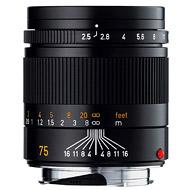 | Leica Summarit-M 75mm f/2.5 Pros: Weight, construction, compactness, materials, Leica quality Cons: Not found Opinion: What can I say... In my opinion, this is an extraordinary lens and unfortunately often snubbed like the whole Leica Summarit series, such as the 35mm, 50mm and 90mm that I have had the opportunity to test for a long time. The 75mm f2.5 is above all light, "short", comfortable and very portable. The optical quality is at the highest level and the colors are natural and warm. A real jewel that has nothing to envy to the brightest fixtures. Of course, the Summilux or the Summicron give images with a higher bokeh, but for the type of photos I take it's fine and I would never replace it with a brighter lens but much more voluminous and twice as heavy. Also to consider is the price of this series, the most affordable from Leica. It's always with me and, by the way, mounted on the M10R it doesn't attract attention at all. It is a very compact and discreet lens for a 75mm. A lens with very high performance already at full aperture and extraordinary as soon as the aperture closes by a stop or two. Really very recommended. sent on June 13, 2024 |
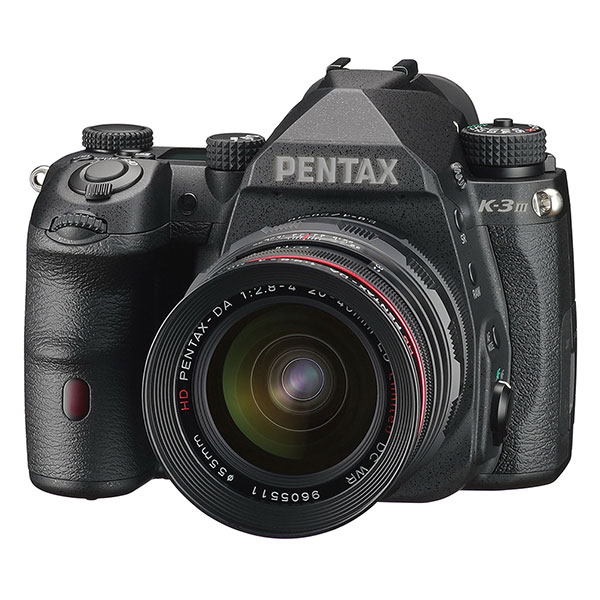 | Pentax K-3 III Monochrome Pros: optical viewfinder, material quality, compactness, image quality, battery life Cons: overstuffed menu, fixed monitor, some functions not immediate to recall Opinion: I couldn't resist the charm of pure black and white and I let myself be seduced. Already the owner of a Leica M246 monochrom, I had extensively experienced in the field the quality and dynamic range of a sensor without a Bayer filter and above all the experience of using a camera designed solely for black and white. The return to the use of a reflex camera also attracted me further, obviously for the optical viewfinder which, in my opinion, is unparalleled. The machine is very well built and is very solid, made of metal and tropicalized. It's not a feather but that also means a guarantee of quality. It grips really well thanks to a well-designed grip. The body has numerous customizable keys and a rich menu, perhaps too rich. I often struggled to find my way around the thousands of voices and sub-voices, but then you slowly get used to it. The AF is excellent, even if I prefer meditated and often static photography, I have not had the opportunity to verify its effectiveness in more dynamic and/or sporty situations. The black and white it renders is soft and full of details, rather natural and never artificial or too digital. It is very reminiscent of the density of the film. However, it must be combined with quality optics. It gives its best with the high ISO and the grain it returns is really pleasant and contributes to images with a very particular vintage look. Compared to the Leica M246, it holds highlights better while the recovery of shadows is truly remarkable. Niche camera but highly recommended for lovers and purists of black and white. sent on May 01, 2024 |
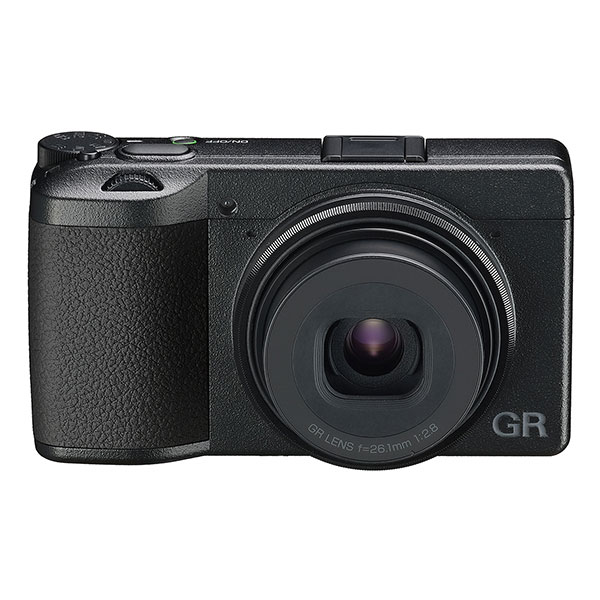 | Ricoh GR IIIx Pros: File Quality, Ease of Use, Materials, Portability, Lightweight Cons: I would say nothing, because what is missing you know before you buy it Opinion: A small miracle. A camera that looks like a toy and churns out images that you can't believe. All in 11cm by 6 and a total weight of 260 grams. I too waited a long time before buying it, thinking about it and thinking about it, obviously for the lack of the viewfinder but also a bit for the high price, but then I wanted to try it and I was really very impressed by this small concentrate of quality. Starting from the construction and materials, to move on to ease of use, to professional-quality images (I'm talking especially about DNG using only those) up to the extreme portability linked to its size and lightness (it is smaller than a smartphone). Needless to say, he's always with me, and that, on a daily basis, really makes a difference. I no longer go out on purpose just to take pictures, with my luggage studied rationally (and above all weighed) but with the Ricoh always in my pocket I capture what happens to me even casually, especially without being observed in various contexts. I've had several compact cameras over the years, but this one is of a really higher level in everything. The GR IIIx is equipped with a 26.1mm fixed camera of remarkable quality, which corresponds to a 40mm in the FF format. For me, perfection. Aspects that I like less: certainly the lack of an electronic viewfinder that can be added and a menu that in my opinion is too "rich", coming from Leica. Noise above ISO 3200 is audible but I wouldn't make a big deal out of it. So far I haven't encountered the dust problem because of the "retractable" lens. Perfection obviously doesn't exist, but having the ability to shoot quietly all day with a camera of this level and even forget that you have it on you is priceless. In this Ricoh-Pentax has been brilliant, currently there are no rivals lurking. Worth all the money spent, absolutely. Rated 10 sent on December 03, 2023 |
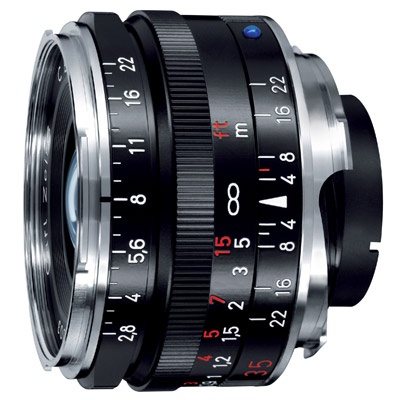 | Zeiss ZM C Biogon T* 35mm f/2.8 Pros: Build quality, image quality, mechanical qualities, very small weight and dimensions, what else? Cons: Lens cap Opinion: I would have a lot to say about this small-big lens, but in reality few words summarize its undoubted qualities: compactness, weight, image quality. I've often been tempted to sell it to buy a brighter 35mm but I haven't succeeded yet. Not a chance. I state that I am not a lover of superluminous optics because I can not stand being behind chromatic aberrations, purple, green, turquoise fringes and with surgeon's focus. Obviously very personal opinion. This Zeiss is perfect. He never gave me problems and I always found him very reliable. Of course there are those who turn up their noses for the 2.8, but to me it gave me fantastic images, always. Sharp at full aperture, no distortion, no problem in backlight, not at all cold colors (common place to dispel for Zeiss optics). What else to say... An irreplaceable lens for me especially for its portability and yield. If we talk about price then, very difficult, indeed almost impossible to find better. For me, I vote 10 and I am not exaggerating. sent on June 05, 2023 |
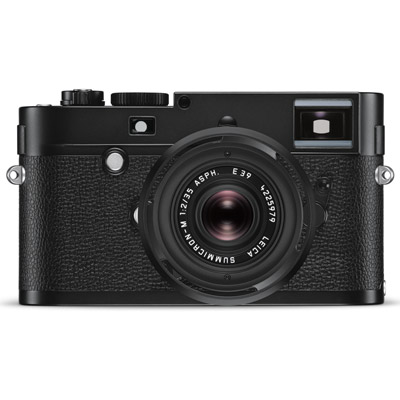 | Leica M Monochrom (Typ 246) Pros: Dynamic range, extremely workable files (especially shadows), ISO hold and fantastic "grain", live view. Of the construction material, the unique design and the essential menu, speaking of a Leica M, I take them for granted Cons: A bit slow in storing DNG, ease of the sensor to collect dust ... That's it. I deliberately do not talk about the price. On the forums unfortunately we often talk only about that. Opinion: Shooting with a Monochrom is a unique and particularly rewarding experience. The M246, in my opinion, represents the right balance between the amount of pixels, 24mpx (obviously for what concerns me and my workflow), essentiality of the controls, excellent viewfinder, good display just enough to serve, practicality of use and of course remarkable image quality. Few frills, as always. I have used and continue to use other M's, but the relationship with a Monochrom is completely different. Looking at the scene even before shooting considering it in shades of gray allows me to focus attention on aspects that go beyond the simple concept of reproduction of reality. This happens to me. It gives me, continuously, the opportunity to reinvent what I have in front of my eyes through a very wide tonal variety, without switching to the BN through conversion in post-production. All this helps me to be more direct, immediate and creative. This is obviously my experience and my way of working. In fact, I am not interested in all the endless disquisitions and controversies about the alleged impossibility of distinguishing a native BN file (from a sensor without a Bayer filter) compared to a color file converted later. Sterile debates. I'm saying something different. Going around with a monochrom means "seeing" in BN, "reasoning" in BN and choosing a portion of reality thinking about it that way, only that way. And the files of the M246 (I'm talking mainly about DNG, because I only use those) are exceptional. Very workable (apart from the obvious attention to the highlights as for all monochromes) and malleable, rich in details not to be believed and above all natural, never artifacts or too digital. Pure poetry. He deserves it, rated 10 sent on December 03, 2022 |
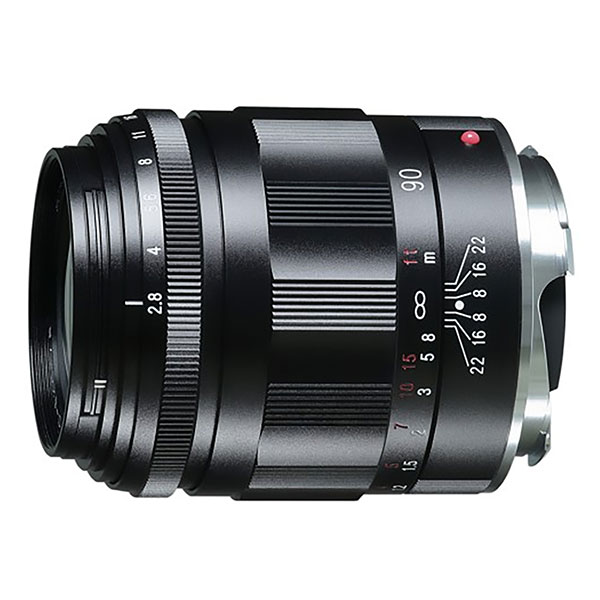 | Voigtlander VM APO-Skopar 90mm f/2.8 Pros: Compactness, lightness, image quality, APO treatment, price Cons: I haven't found any Opinion: It has been some time since I wanted to express an opinion on this formidable lens. There's not much to add about Voigtlander's latest APO lens series. In my opinion fantastic. This 90mm f2.8 does not betray the series. What can I say... lightweight (250 grams for a 90mm...), small (6 cm long) top build quality and unbeatable price. I use it on the Leica M11 and find it "special" to say the least. A gem to always carry with you. Rings fluid, soft, precise, comfortable. I have never really loved focal lengths from 50mm onwards especially for the weight / size ratio and Voigtlander gave me this gift! It carries very well in your bag or mounted on the camera like any other standard lens (provided of course you love the "narrow" focal lengths). Remarkable image quality thanks to the APO treatment. Incisive, and very sharp files without ever being too much artifacts with saturated and natural colors. The 2.8 is fine with me, I also really like the bokeh that comes with it. I have never been driven crazy by superluminous and for the photos I take I am not interested in super openings (images invariably characterized by chromatic aberrations and purple, green, purple, turquoise fringes, etc.). Really satisfied with this little masterpiece. Super recommended and congratulations to Voigtlander once again! sent on June 24, 2022 |
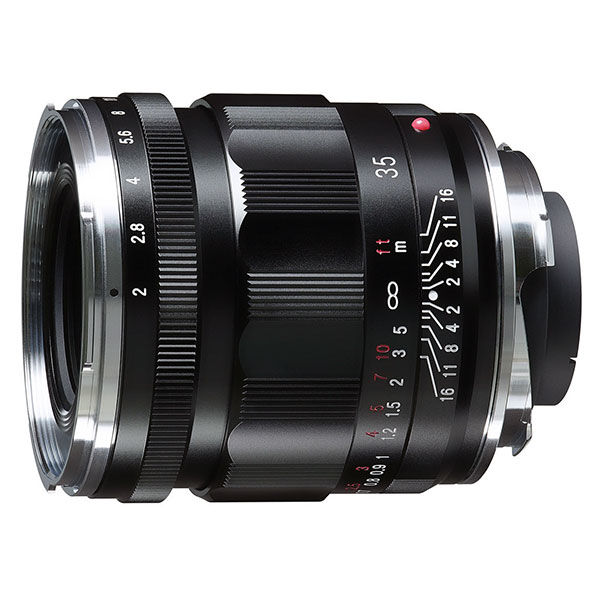 | Voigtlander APO-Lanthar 35mm f/2 Aspherical Pros: Construction materials, fluidity of rings, image quality, APO treatment, sharpness already at TA, price Cons: Not really "pocketable", impact on vision through the viewfinder, that's all. Opinion: I was always hesitant and skeptical until I tried it on the Leica M10 and M11 and I was afraid that the comparison with the Summicron 35mm, did not hold up in the slightest. They are obviously different goals and the Leica look for heaven's sake, is not discussed (especially for the colors), but ... try it once and then you will tell me! Fantastic from several points of view. Meanwhile, the materials used and the construction. Soft rings, especially that of the diaphragm, perfect mechanisms, without a minimum of play or uncertainty. Metal and glass, that's all. A bit cumbersome, that you (it is actually lunghetto) and you can easily see it at the bottom right looking through the viewfinder, but then you get used to it. Truly amazing optical quality. Sharpness and incisiveness already at f2, but at f4... f5.6.... perfection. Decisive, with its own character and the APO treatment makes it unique. No aberrations and distortions. I would like to point out that I am not biased because I have had for a long time also several Leica optics and I did not give up, but I assure you that the latest Voigtlander, including this and the 50mm (also APO Lanthar Asferico) are absolutely to have! They really won me over and the price also entices a lot! Rating 10 sent on June 22, 2022 |
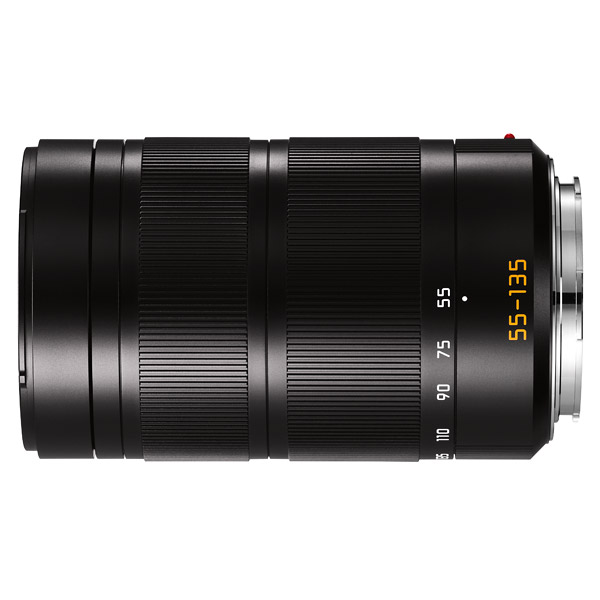 | Leica APO-Vario-Elmar-TL 55-135mm f/3.5-4.5 ASPH Pros: Image quality, apochromatic, construction, materials, lightness, compactness, design Cons: Lack of stabilization, new price Opinion: Great beautiful lens, solid, slender and light. Materials and construction at the top, nothing to say. Precise and impeccable scrolling of the rings. Very minimal design, in my opinion really captivating. Full-fledged Leica product. The yield is excellent already at full aperture and the apochromatic treatment of the lenses affects a truly remarkable definition and incisiveness of the images. Zero aberrations. Leica look, no artifacts or ultra-sharp files. Bokeh very pleasant and soft, natural colors and contrast, never too "digital". I chose it for this. The only sore point is the lack of the stabilizer that, especially at longer focal lengths (150-200mm) is felt. You have to work with a lot of light and with rather short times at almost all focal lengths. Nothing dramatic, you get used to it a little at a time, but it is an aspect not to be underestimated. Other elements to keep in mind are the reduced weight and footprint that, for a lens of this type make the difference and help a lot in the outputs with different optics in tow. In conclusion, certainly very recommended for those who already have an APSC kit and need a very reliable telephoto lens. sent on December 29, 2021 |
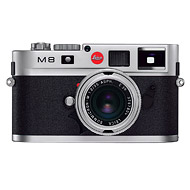 | Leica M8 / M8.2 Pros: Aesthetics, construction materials, CCD sensor, colors, file quality, ease of use Cons: Aps-H sensor, slow storage, ISO noise above 320, magenta dominant in blacks, low LCD quality Opinion: I bought an M8.2 at a really attractive price and I'm discovering it little by little. The M8.2 is the first digital M I have after having had M3 and M6 in the past. I am very satisfied with the purchase and I must say I was immediately struck by the quality of the files, especially the body and saturation of the images, never contrived and always natural. He lives, very much lives. All thanks to the CCD that I find extraordinary, I did not want to believe it. I'm dealing with the rangefinder after a long time and I must say that in addition to being very precise I also find it very funny. The return to manual focus gave me much more confidence than I thought! The cons I listed above, but nothing disabling. If you buy a car of this type today with the several years that you carry on your shoulders you are aware of its limitations. Everything is up to accepting them or not. For now I can say that its 10 mpx are amazing and I'm very pleased to be back a little' "back" instead of trudging to the continuous chase of megapixellate ...! Since I use it I have forgotten about so many "effects" and features that in reality have never seemed indispensable to me (gusts, AF tracking, live view, touch screen, mega pixel, stabilization, film simulation, GPS, wi-fi, etc.) The essential, the necessary, period. No time wasters. You can also leave the manual in the drawer. What you need is all there, some side buttons and the rangefinder. The rest is experienced in the field, with their own photographic knowledge and skills. sent on July 14, 2021 |
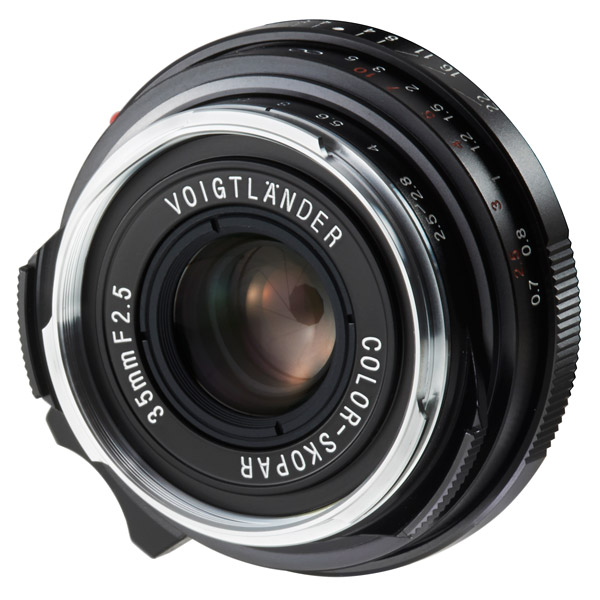 | Voigtlander VM 35mm f/2.5 Color Skopar II Pros: Extreme compactness, lightness, aesthetics, material quality, naturalness of images Cons: Small rings, diaphragm ring too fluid and easy to move Opinion: Purchased used at a very reasonable price, I had not considered it among the best objectives, for image quality and incisiveness, compared to those of the parent company Leica. I'm using it especially on Apsc (52mm focal mounted on Leica CL) and honestly I've believed it. Very compact and aesthetically pleasing, the "pancake" makes you love it. Not very bright (f/2.5), however, I find it very practical and suitable for most situations. Obviously it provides for a more "reasoned" use and suitable for a photograph not "bite and escape". I'm finding each other very well and I've become fond of it. The focus is very pleasant and precise but as expected you have to deal a little with the softness at full opening and a rather present vignette (nothing tragic). Good from f/5.6 onwards, to f/8 and f/11 great. The files definitely match my taste. Natural, never excessively sharp, artifacts or plasticosis. Very satisfied! What I find rather annoying is the ring of the diaphragms, decidedly too slow and soft. You often move it without realizing it, but then you get used to it. Too bad, I have to say the only out of tune note on a well-designed and solid-looking object with professional characteristics. Far be it from me to compare it with the M objectives, but I have to admit that I made a very good purchase at a more than honest price. Very recommended! sent on April 06, 2021 |
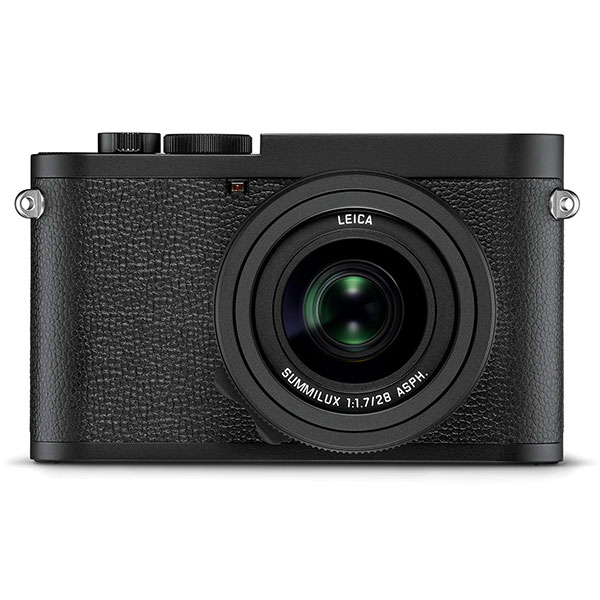 | Leica Q2 Monochrom Pros: aesthetics, materials and top construction, dynamic range, shadow recovery, high ISO, stabilization, AF, tropicalization Cons: ergonomics, uncomfortable right "wheel", total lack of microphone sockets, headphones and USB even for downloading images, ease of burning high lights like all monochromes Opinion: Bought a couple of weeks after her announcement I got to try it "on the road" in different outings and various situations. It is a full-fledted Leica Q2 but without "veils", in the sense that the absence of the Bayer filter allows the newborn to reach levels of sharpness, image cleanliness and incredible dynamic gamma values, I can assure you. As far as high ISOs are concerned, we are at very high levels of reduction, but since we are not being led to push these performance too high, I reserve the right to check this aspect calmly over time. What instead represents "the danger" always lurking is the ease with which you can burn the high lights, but I was already aware of this because it is a feature common to other monochromes that over the years I have been able to try. So, watch out! With the Q2M the high lights are not recovered. If they went, they went. With shadows, however, it is not a problem, quite the contrary. The recovery is formidable. I can confirm, however, that the B/N it returns is magical, full of detail and never unnatural. Just by trying it you understand what I'm saying. It is certainly not a common machine or for all occasions. With the Q2M, a precise choice is obviously made, as on the other hand by choosing the 28mm despite the frames at 35, 50 and 75 (but only for jpegs). The aesthetics and materials used, as expected, are at the highest levels, nothing comparable to the cameras I have had over time. Beware of the smallest details, essentials and functionality. Everything that made me decide for the final choice. Among the things that I find between the cons (but which I understand within the minimal Leica logic) is the lack of any USB socket, microphone attachment or headset. The right wheel is a bit uncomfortable and hard and you struggle to "feel" it quickly when you are taken from the scene with your eye in the crosshairs, but then you get used to it. Stabilization is exceptional and allows shots at unthinkable times. And then tropicalization, macro mode, upgraded battery and spectacular viewfinder. Finally, I obviously do not talk about the price, the various forums opened on this topic are many and varied and often full of clichés and banalities of all kinds. Those who approach Leica know from the beginning what brand it is and know a minimum its history. Rating: 9.5 sent on January 01, 2021 |
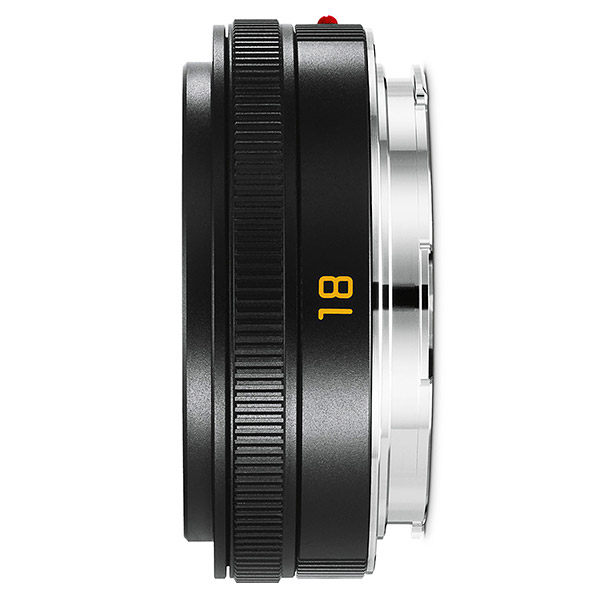 | Leica Elmarit-TL 18mm f/2.8 ASPH Pros: compactness, versatility, brightness, overall quality Cons: slight distortion, price Opinion: The 18mm f2.8 asph is the smallest and most compact lens in the TL series and is the reason I made it choose. Combined with the Leica CL the dimensions become those of a pocket compact, neither more nor less. The small lens behaves well in most cases and that f2.8 is often really convenient. The wide-angle focal is street-wide, but I often use it on the go because of its versatility and especially its brightness. Compared to the other fixed in the series it is certainly not what I prefer for image quality and sharpness but it does well its work and the very small footprint most of the time repays me for some of its flaws. In my opinion it gives the best of itself between f4 and f5.6 while from f8 onwards the incisiveness degrades a little. In short, in my opinion a good lens for everything without excelling in anything in particular but that for its very small size ends up being the favorite travel companion. sent on September 11, 2020 |
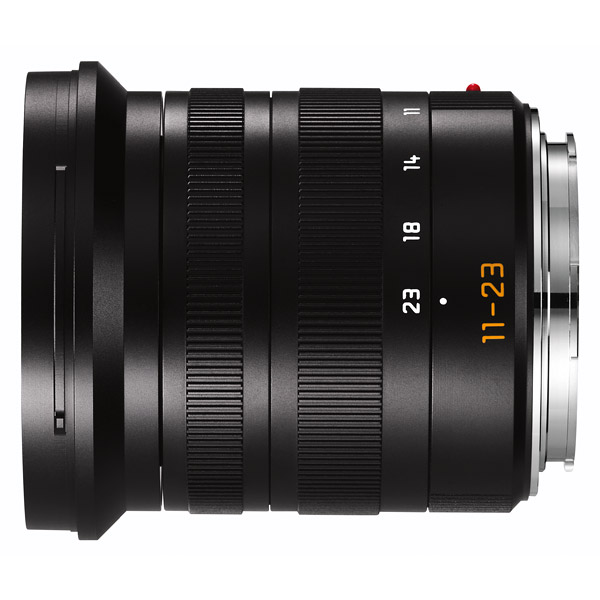 | Leica Super-Vario-Elmar-TL 11-23 mm f/3.5-4.5 ASPH Pros: solidity, precision, robustness, focal excursion, overall quality Cons: little bright, not stabilized, price (but you have to remember it every time?) Opinion: I wanted to buy it despite not being a lover of wide-angle focals and I have to say that instead the optics is really high level and very fun especially if used at 11mm (17 equivalent in 35mm format). Strong also of the many positive opinions is a lens that I wanted to try for a long time. What about... I have other L mount optics but this seems to me the most resolutional in terms of sharpness, dynamic range and very low distortion (of course if held in bubble). Certainly not comparable to the brightest fixtures, but in many situations truly amazing. A valuable optics, excellently built (but this I expected) and very versatile especially for architecture and landscape. At full opening it defends very well even at the edges that I feared were the weak area of the frame. For such an open wide angle nothing to say. For now, I have not encountered any major flares or color aberrations. Too bad for the rather small opening that limits it in situations where the light is lower, but I must say that so far it has not given me any particular problems, considering also the absence of any form of stabilization. I conclude by saying that in my opinion it is a lens that can not be missing in the Leica APS-C kit, but certainly to be flanked by a couple of much brighter fixtures. sent on January 05, 2020 |
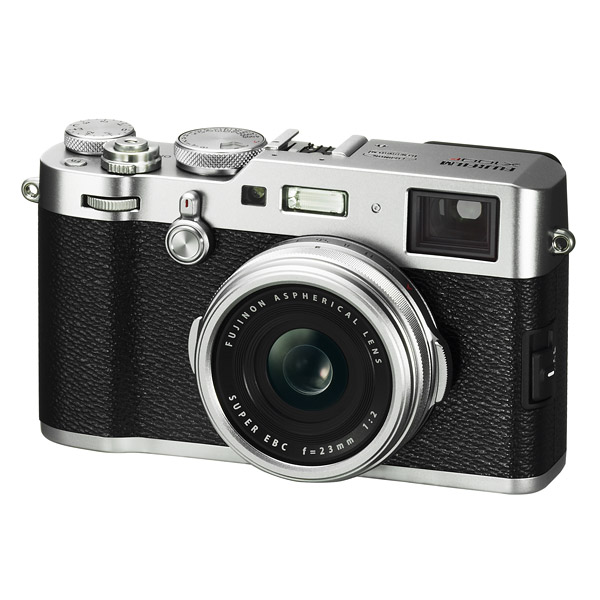 | Fujifilm X100F Pros: design, lightness, compactness, file sharpness, Raw conversion to room Cons: ISO noise, EVF scope to be improved, several rather unnecessary functions, price Opinion: A nice object, nothing to say. Attractive design and very compact body that entices you to carry it with you at all time. I also own an X-T3, but it's a different story, I'm sorry to point out. It is clear, we are talking about a compact but born from a rather ambitious project. The X100f is very comfortable but its features in my opinion are little more than discreet. That's it. You have to settle for a lot. I had read rave reviews and opinions which I unfortunately have not yet got to confirm. Ok improvements compared to the X100T or X100S, including the AF, the joystick, the megapixels, etc. but to me personally still does not convince you at all. The hybrid viewfinder (especially the optical one with an electronic viewing window) is rather useless and the electronic one reaches the sufficiency. Little defined returns too artificial a vision and (especially in B/N) is also characterized by an annoying purple dominant. The lens is good but even here without exaggeration, as I have often been able to read from opinion-gave- even open-mouthed. Definitely comfortable the f2 in situations with little light but in a fixed 35mm, glued to a compact mid/high band I did not expect all that barrel distortion, I have to admit. And then the noise already at 400 iso, slow AF, slow storage RAW-JPEG, poor battery life. I agree with those who have gone before me to consider many keys and many functions more fun than useful. In short, the X100f is not only flaws, indeed, the qualities are there and touch each other, but compared to the price of the new, really exaggerated, you would expect much much more. sent on November 19, 2019 |
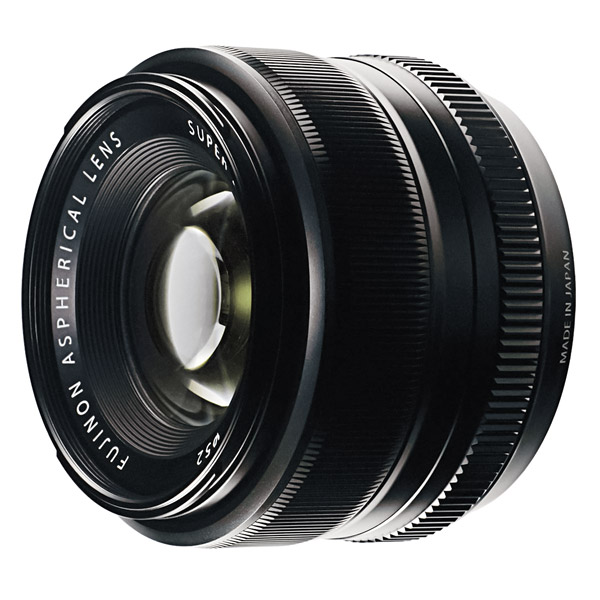 | Fujifilm XF 35mm f/1.4 R Pros: General quality, blurred at full opening, weight, aesthetics Cons: Almost nothing Opinion: A respectable lens. A lens built very well and with a really affordable price for what it offers. I also had the 35 f2, but this one I prefer both for sharpness and colors and for blurry and not least for aesthetics. It adapts very well to the X-T3 and the slowness of the autofocus compared to the f2 (definitely found) for me was not a major problem. I don't use it for action photos or sports, so... the bokeh is remarkable and at full opening it defends really well, I did not believe. It's a focal point that i personally care a little tight (52.5 mm) but despite everything I struggle to remove it from the machine. Only the diaphragm diaphragm diaphragm a little too soft and easy to move, otherwise really recommended. sent on November 15, 2019 |
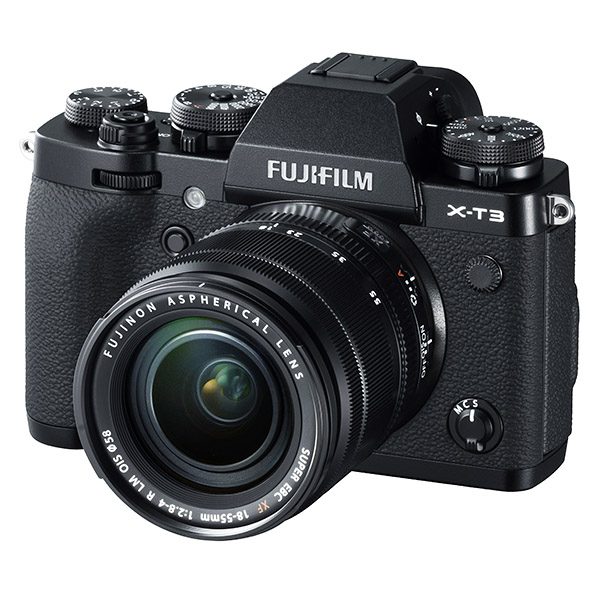 | Fujifilm X-T3 Pros: Aesthetics, construction, versatility, keys and adjustments at your fingertips and hand, AF speed Cons: Menu too "stuffed" and tiring, tendency to "burn" the highlights, dominant magenta in the balance of automatic white, ISO noise Opinion: The X-T3 is a mature mirrorless. The new 26.1 mp sensor combined with the X-pro 4 processor and a number of improvements compared to both the X-T1 and X-T2 that preceded it, make it a complete camera suitable for the most varied situations. Definitely very responsive and with a very high-performance AF in almost all light conditions and with a satisfactory ISO hold (nothing shocking). Aesthetically I find it very beautiful and the ergonomics is good but with standard or medium size optics. Very good Jpeg and keys in the right place, as per Fuji philosophy. Double slots, responsive touch screen and miscellaneous connections. But let's get to the less positive notes. I come from the X-T20 and X-H1 that I have resold and I can confirm some aspects "against" that I also find in this X-T3. First of all the menus, in my opinion too extensive and complicated to manage. You have to start over every time you want to change a function if you exit the menu for verification. It makes you nervous. And then in my own way (compared with Nikon and Leica that I own) too many functions; too many possibilities that in most cases risk confusing or are not necessary. I also found, but this also in the other Fuji that I had, a tendency to easily burn the highlights especially in black white that I use often. This with different optics that I got to test. In the presence of very contrasting scenes you often have to work in the DR 400 (dynamic range) and this at the expense of a much more visible background noise (from 640 iso onwards). The live view often goes jerky but to that you get used to it, just press the shutter button in half, even if I find it very annoying. I would then like to dispel the myth of white balance automatically. In the X-T3 I thought I would find a marked improvement over the cameras that preceded it and instead I often find it inaccurate and with an obvious magenta dominant. Also this common to Fuji that I owned. Obviously everything can be corrected but I do not find it so "automatic"! Finally, the exposure adjustment key (matrix, spot, etc.) is too close to the power button and easily in the variation happens to turn off the camera. To conclude the positives there are and are many but the Fuji X-T3 once again is confirmation that the perfect camera does not exist. A reliable travel companion, light and versatile, good for everything but with a character similar to many others sent on October 25, 2019 |
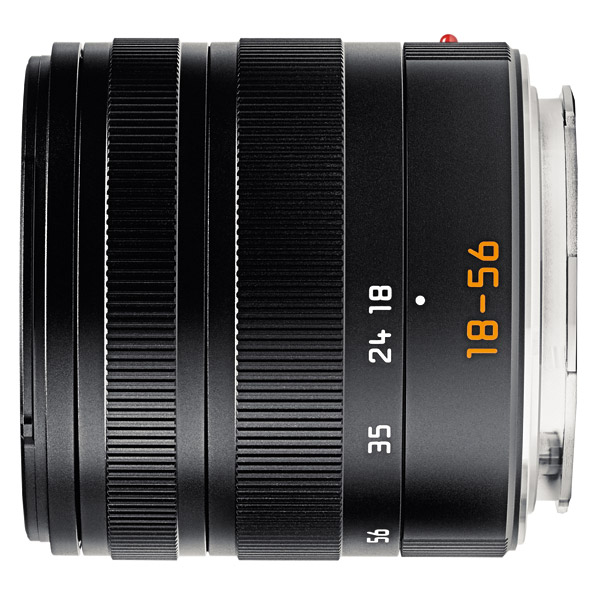 | Leica Vario-Elmar TL 18-56mm f/3.5-5.6 Pros: focal coverage, compactness, build quality, AF speed Cons: f3.5/5.6 Opinion: Light, handy, portable and obviously well built. Very fluid and precise dials. Comfortable handyman designed for excursions and outings with a few clutter. Too bad for the reduced brightness f3.5-5.6 that of course you pay in terms of excessive noise having to raise ISOs often even in the most common situations. It is a lens that needs light, a lot of light and that gives the best of itself by day and in optimal or almost optimal weather conditions, also because there is no stabilization and the best results are obtained from f5.6 and f8 onwards. Even at 56mm the sharpest sharpness in my opinion is reached at f11. Therefore, to avoid splashing the ISOs too high, we recommend a small tripod always with it, especially in situations where the light is quite weak. The AF is very fast and precise, nothing to say. I would say an indispensable lens for the APS-C series of Leica (CL, T, TL, TL2) if you choose to carry with you a single lens to deal with mixed situations but that obviously can not compete with the native prefixes, especially the 23mm f2 or the 35 f1.4. However very recommended. sent on August 02, 2019 |
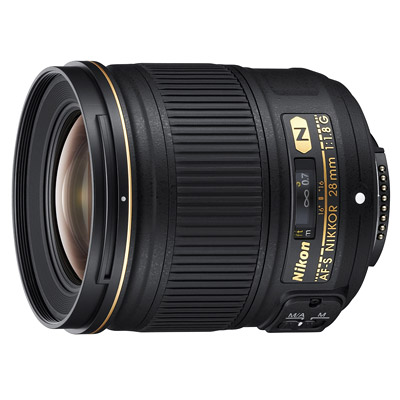 | Nikon AF-S 28mm f/1.8 G Pros: Af, sharpness, lightness, transportability Cons: Material Quality, Focus Dial in Bad Manual Opinion: ... too bad for the quality of the materials with which this optics is built because the results are really good. Too bad for the focus dial in the really bad manual (unfortunately I do not find other adjectives) because in Af it is amazing. Too bad to have the feeling of managing Barbie's camera focus because as 28mm you defend really well, nothing to say. Too bad for the TA vignette because otherwise the quality of the images has nothing to envy to the 28mm most ephaly ephaed. Too bad I didn't have it before because the temptation is to stop taking it out of the car. sent on July 11, 2019 |
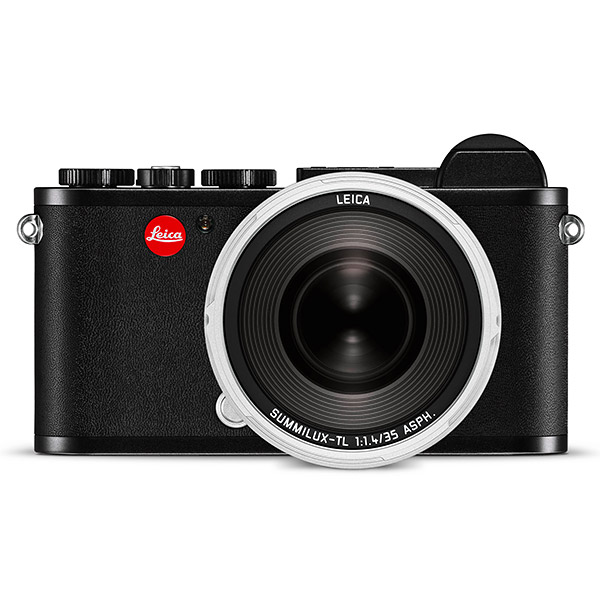 | Leica CL Pros: Aesthetics, construction materials, sensor, file quality, customizable jays Cons: Poor ergonomics, no cable connection including USB for image download, native optical cost, battery life Opinion: The quality of construction, the materials used and assembled as always are indisputable. The essential design in my opinion is remarkable and common to most Leica. A matter of taste, I find her beautiful. Practical, lightweight and paired with lenses such as the Elmarit 18mm f2.8 ASPH or the Summicron 23mm f2 ASPH becomes a great companion for street and light exits. Optional hand grip is strongly recommended. I prefer the electronic sight to that of the Fuji from which I come mainly because unlike the latter that of the CL never "flickers" never. The files (especially the Raw) are very good and in my opinion the black white is exciting. Now I use especially that. Tonal variety and unparalleled microcontrast. For now I am using it with the Summicron 23mm and I have to say that the overall result satisfies me very much. The images are always balanced and never too digitally defined or artfully arted. Maybe a little closed the shadows but absolutely manageable in post. Very natural and engraved details without ever being too cut out. That's what I appreciate most. The AF is fast and accurate even if only at contrast detection. For now I found myself without problems. What I don't like instead is the total lack of cable connections of any kind (external microphone, HDMI, headphones, etc.) including USB. To download images to PC, in fact, you always have to open the lower compartment that houses the battery and remove the memory card that is next to it. It doesn't seem like a very happy choice, but you always sacrifice everything willingly to keep the design of a Leica essential! The menu I thought was easier but you get used to it after a while. I would have liked some more command at hand and less hidden information. Very very short battery life, too in my opinion. Too bad. The small top display and the two customizable keys with the dials for editing are convenient. In short, a high-end mirrorless that definitely deserves attention. An elegant and reliable tool that does not disappoint at all. I think it's a flying pass. sent on July 08, 2019 |
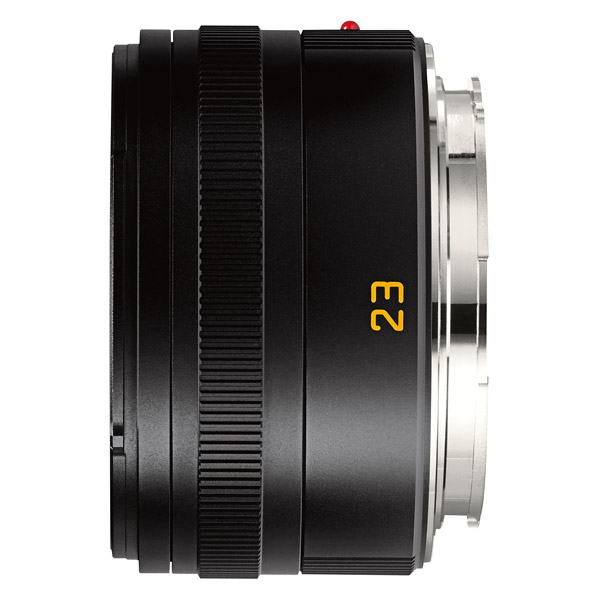 | Leica Summicron-TL 23mm f/2 ASPH Pros: Leica quality, construction and materials, maf dial, colors, bokeh Cons: f2.8 on minimum distance, price Opinion: Needless to say, the quality of the materials and construction are at the highest level (including the lampshade). Completely metal, the mechanisms and the focus dial are perfect. Excellent scrolling and precision, from Swiss watch. I must say that sealing in manual from more pleasure than using the af although the latter is really very fast and responsive. The lens has its own character and the qualities are many. Sharpness already from f2 and gorgeous bokeh on much of the frame with a very negligible distortion. From f2.8 the sharpness and incisiveness increase considerably and from f4 the level rises again, then to f5.6... f8 in my opinion reaches its maximum, although its peculiarity is to be quite soft and natural and never gritty and too "artifact" in details and colors. This is what I think makes it fascinating and recognizable. Cons: you have to get used to the fact that at the slightest distance of maf the lens switches to f2.8 even if set to f2 (definitely a choice by Leica towards greater sharpness and richness of details), a detail that could irritate many. In fact, it is annoying not to be able to decide on the maximum opening at close range and that the lens is the decision! And lastly, the price, in my opinion disproportionate even if the optics is of excellent quality (and not to shout) but you know, with Leica you do not buy only an object, you buy a brand that has become a myth and you become part of a piece of history of photography. sent on June 16, 2019 |
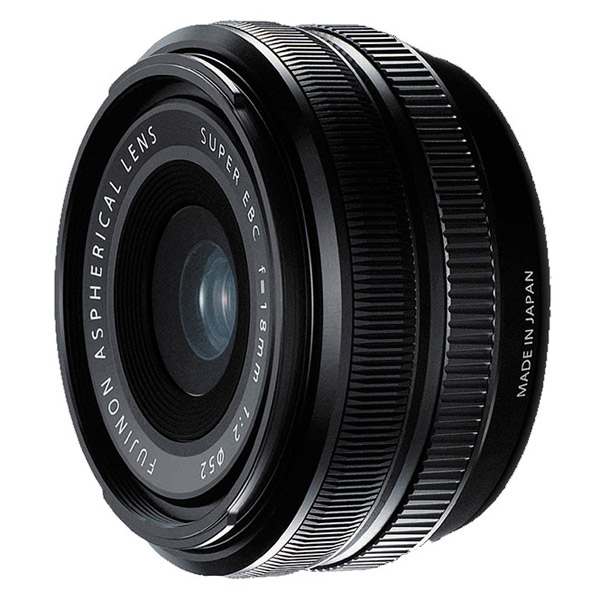 | Fujifilm XF 18mm f/2 R Pros: compactness, sharpness, colours, aperture ring Cons: AF noise, too "digital" character Opinion: Undoubtedly versatile and comfortable, practical for outputs with little space and a lot of quality. I Don't feel like saying exceptional but it does its job head-on and it comes out with full votes. Excellent colors and sharpness even at the edges of the frame (from 2.8 onwards)... Too much for me too. I Perceive in this sense that is a taste sometimes a bit artifact, too "digital", from the details a little ' contornamented, but this feature is not the first time that I hangout in some lenses Fuji. What I definitely do not like is the continuous autofocus noise that I find rather annoying and that, even this time, I had already found in 27 f2.8. Definitely promoted but not first class. sent on April 03, 2019 |
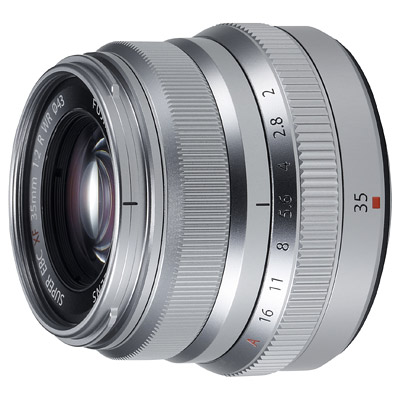 | Fujifilm XF 35mm f/2 R WR Pros: Weight (feather), construction, AF, sharpness Cons: Aesthetics, Lens Hood Opinion: Valuable Objective in many respects. First of all very good sharpness already at TA but from 2.8 onwards it goes even better. A F4 and F 5.6 from the maximum (as Per script). Lightness, aperture ring very well calibrated and pleasantly smooth. Af silent and very fast. What I do not love instead is its design (but of course it is my opinion) that looks like that of a small trunk cone (ie with the tip Mozza) without a true why. My impression, but this generally applies to almost the entire Fuji system, is that it often seems to have to do with "toys" or with miniature collectibles (both bodies and lenses) built in an excellent way, but still "objects", almost were small reproductions of professional systems. And I'm not saying this just because I come from the reflex world to which I am very fond. The "Vintage" design I really like and the Fuji line in this sense has made it immediately very recognizable on the market. I Have the impression, however, that this sometimes plays a bit at the expense of ergonomics and practicality of use. I Can say it quietly for my X-T20, mirrorless in my opinion beautiful but better suited to "Lilliputziani" and also rather uncomfortable (the additional hand grip is almost mandatory) and also for the newer X-H1 than in an attempt to equip it with a handle Smoother results in fact as a kind of hybrid with "old style" taste and a high-tech contraption. Going Back to the lens, definitely recommended. Excellent colors and also the fuzzy (not to be scream) and to have in the outfit considering also the price very interesting. sent on March 26, 2019 |
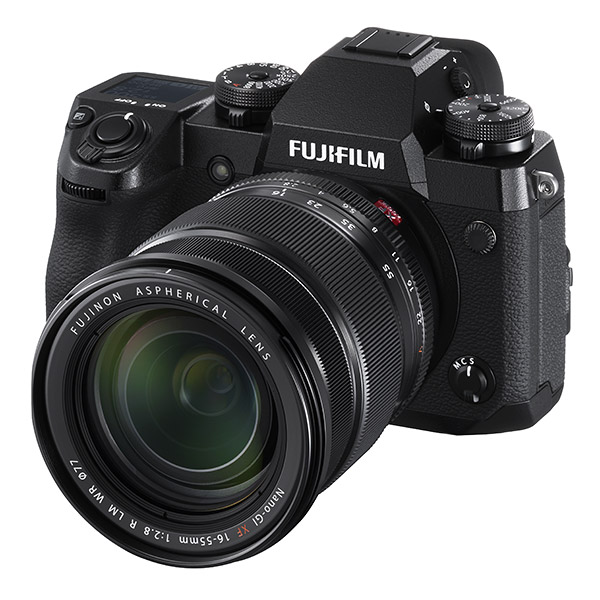 | Fujifilm X-H1 Pros: construction, magnesium alloy body, grip, stabilization Cons: Non-immediate menu functions (like many Fuji), battery life, battery life (...) Opinion: The X-H1, in my opinion, divided the audience. There are those who snubbed it immediately considering it an X-T2 stabilized and designed especially for video makers waiting for the X-T3 to come out as it happened then, and who, like myself, bought it to have a second Fuji body (or first?) less?) less like the X-T20 and more solid, comfortable and with its physical presence. The other reason that drove me to purchase was obviously the body with stabilized sensor, but even here, those who ignored it argue that the stabilizer serves mainly for those who make videos and that all in all is almost useless. Of course I do not agree and having the opportunity to shoot at previously unthinkable times and use manual optics without a stabilizer was very satisfying. Let's face it, the X-H1 wasn't very lucky right away. By the way, I say this with sincerity: the X-H1 is not aesthetically up to the other X-series cameras that owe their fortune even to the vintage taste reminiscent of the analogues of the years before. The X-H1 looks like a kind of hybrid, between recovering a retro design and something very modern and technological. Let's say on the middle road between the X-series and the medium-format GFX to which it seems to make the verse. Perhaps this was another reason for his almost unnoticed passage, indeed probably crushed in the middle, between the two series. In fact, many have asked themselves: what is the use of the X-H1? How does it position itself and what does it add? In my opinion, however, from a technical point of view the qualities are many and touch each other with their hands. Ok, it has the same sensor as the X-T2, but stabilized on 5 axes (!), very improved and decidedly wide, comfortable top display, joystick, touchscreen, af more reliable, ergonomics and grip, excellent tropicalization, very workable and rich files detail, customizable function keys, mute shooting possibilities, professional video compartment, double slot. The sore notes: menu (but this, in my opinion is a problem common to Fuji in general) not easy to manage and rather tiring (especially if you want to find on the fly a function to change, every time you have to start over if you leave the menu for the Check. A real stress!), "Q" button in a truly unhappy position (it activates almost every time you hold the camera), quite noticeable noise at high iso and battery life, really ridiculous! Okay, with battery grip it solves, but someone like me who doesn't want to carry a machine with a prosthesis every time that makes it almost bulkier than a reflex, that's a real problem. But is it possible that there is no way to study a better-performing battery? In conclusion I am still testing the machine, but I must say that apart from the aforementioned defects I am very satisfied with the purchase, because it was what I needed. A robust body, well assembled and with the ability to mount important optics of both weight and quality. Definitely recommended also for the price that dropped considerably compared to when it came out. sent on March 03, 2019 |
 | Nikon 35mm f/2 AI-s Pros: Construction, optical and mechanical quality, character Cons: Wrong to compare it to today's optics Opinion: Bought used at a negligible price the 35mm F2 is a lens of all respect as long as they accept the typical optical characteristics of a project almost forty years ago. I mean it would be frustrating to expect the sharpness, the colors or the contrast of the modern superperformance optics. It is a matter of choice that must be made consciously. The Ai-S Series I don't think you can compare it to the D, G, E series. They are different worlds despite their apparent closeness. The 35 F2 is never as they say a "blade", even at intermediate diaphragms. If we compare it to the 35 F 1.8 G, the 35 F 1.4, the Tamron or Sigma there is no history. They are slow designed and built in a very different way. This lens is soft, (in the positive sense of the term) with a contrast and natural colors without ever "shouting" and showing the muscles as do many recent goals. I do not dwell much on the well-known aspects that relate to the relationship between central sharpness and fall at the edges or on the acclaimed aberrations, distortions or unpredictable lateral "ghosts". What I think is interesting to note is that the optics has a peculiar character, typical of the optics of those years (less contrast, natural images with details "not cropped", blurred delicate, non-aggressive colors) but I understand who cares Far. The "vintage" flavour is obviously not only related to the design of another era but it also highlights comparing images taken between this 35 and a current one. The choice I think should be made especially bearing in mind this aspect. And then tastes are tastes. It is undoubtedly a lens that brings his years very well on his shoulders. For me very recommended! sent on December 07, 2018 |
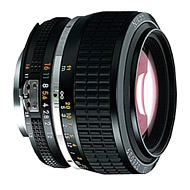 | Nikon 50mm f/1.2 AI-s Pros: Solidity, general construction, mechanics, character Cons: Not easy to open focus, barrel distortion Opinion: A great lens. Mechanically and optically. Impeccable construction and unmatched ring movements. Very soft and ultra-calibrated. A Swiss watch. Optically I find it remarkable, especially from F4 to f 5.6 where from the best of itself. But those who buy such optics are obviously attracted to that F 1.2 that promises fireworks. Well, the MAF is stuff from surgeons but the bokeh gives off dream images. Not simple, requires calm and attention and the results are unique in their kind. Fuzzy creamy, buttery... almost liquid. A marvel. Obviously for the sharpness will have to move to the 2... 2.8 and as I said before at F4 is exceptional. Lens with a very recognizable character, peculiar, not like most of today's very performing but little diversified and rather anonymous. The choice I think should be made keeping in mind this aspect and not just thinking about the lack of autofocus. Dense colors, Pastosi, natural images. It is certainly a dip in the vintage, but also a return to images in which you perceive a less "digital" aspect, less pushed and gritty but also less artifact. The problem is that once you try the temptation is to no longer resort to optics with too many controls and stabilizations. A real gem. Too bad for some pretty obvious barrel distortion and some aberration around the corner... but the perfect optics doesn't exist. To try at least once (and then to keep!) sent on November 30, 2018 |
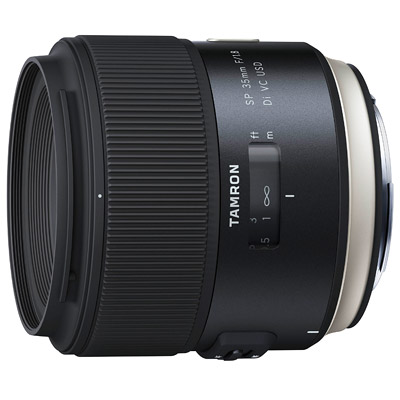 | Tamron SP 35mm f/1.8 Di VC USD Pros: General quality, sharpness, stabilization Cons: Sometimes chromatic aberrations and af not very precise Opinion: I can only positively review this lens after selecting it among the many 35mm on the market. The choice fell on Tamron even if f 1.8, for lightness, compactness, Price and stabilization (which never fails). Excellent lens, according to all points of view. Well built, solid and with a nice modern design. At full aperture is very appreciableeven if (of course) a bit soft; From 2, 2.8 onwards remarkable, from 4 outstanding. Vote Ten for Sharpness! The stabilizer is sensational, unmoved shots with Nikon D810 even at 1/6 sec., what do you want more? The colors? Great. At the opening you have to be careful to some chromatic aberration, rather annoying and some "misfires" of the AF without a real apparent reason. Another positive note that made me prefer to other 35mm is the ability to get closer to the subject to make it look almost like a macro! Remarkable. Congratulations to Tamron! Loved! sent on November 26, 2018 |
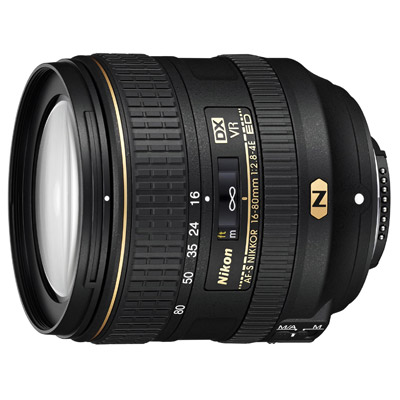 | Nikon AF-S DX 16-80mm f/2.8-4 E ED VR Pros: Stabilizer, sharpness, semi-pro handyman Cons: Distortion at wide-angle focal lengths and of course the price Opinion: Taken to replace the excellent Sigma 17-50 f2.8 I was intrigued by the good reviews. Very good handyman to keep assembled for the most varied needs. Covers the most common focal lengths. The VR is sensational, nothing to say, as on the other hand the sharpness (Acceptabilissima even at full aperture). Sore notes, in my opinion, the saturation of the colors, too, too much charge. In fact, I have to set the picture control to neutral or uniform or reduce the saturation manually. Then the distortion to 16, 18, 20, 24... All of course correctable in PP and nothing tragic but annoying to see. Obviously I do not dwell on the price, a topic already stressed by many. I can only say that I associate myself with the choir, unjustifiably dear. But this does not mean that it is not a good goal, with its character, incisive, fast and well-constructed. Definitely recommended but if possible to find at the price of the used. sent on November 11, 2018 |
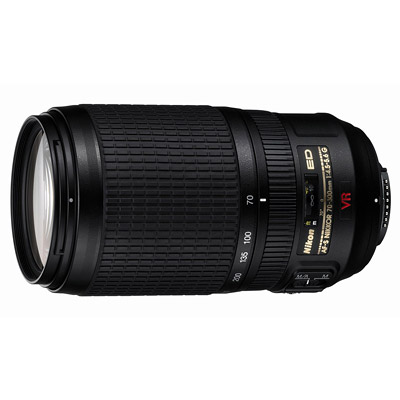 | Nikon AF-S 70-300mm f/4.5-5.6 G ED VR Pros: Compactness, lightness, VR Cons: Noisy VR, sharpness at 300mm, construction materials Opinion: It is a lens to which I have grown fond of it now for a long time. The positive aspects are undoubtedly the focal length up to 300mm, the lightness, the reduced measure at rest and an excellent stabilizer. I also recognize a good sharpness (not exaggerated) to the focal averages (closing a little bit) and in my opinion also (and it is not a little) a very nice contrast and decisive colors. Cons are a rather noisy VR (I agree with my predecessors), the low light (and also this is obvious), the material very plasticky (but that makes it more portable and becomes a topic "pro" if you are around for many hours) and the sharpness that drops at focal l Hungary up to 300mm. But despite its limitations compared to the most expensive professional lenses I have never been able to separate, it is always with me and if necessary does its job, very very good! I have to say honestly that I am sorry that this year is no longer in production. One more reason to find it at excellent prices in the used. sent on October 09, 2018 |
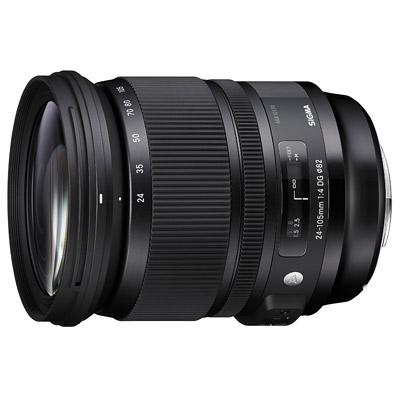 | Sigma 24-105mm f/4 DG OS HSM Art Pros: Build quality, aesthetics, F4 at all focal lengths, stabilizer, sharpness Cons: Usual problems F/b Focus Sigma, distortion and vignetting more or less at all focal Opinion: Taken to accompany me around like handyman. Immediately discovered the usual problems of F/b focus unresolved in the room but only after purchasing the USB dock separately. A hassle but I had previously put into account. Apart from that the lens is very solid and built very well, a real tank. I also like it very aesthetically and for the weight, which is true that it makes you feel, but that from a feeling of professional optics. Maybe a little hard scrolling the zoom, I hope because new. Some time ago I had the Nikkor 24-120 VR that I do not regret. I never really liked it. This has the sharpness and definition I was looking for, though rather concentrated in the central area. Vote 10 for the stabilizer, really remarkable! One of the most effective stabilizers that ever happened to me. What I do not like is the obvious barrel distortion at 24, 35mm and bearing after, up to 105. In short it is, in one way or another always quite obvious. As on the other hand the vignetting, but in my opinion, is less annoying than in 24-120. In any case a solid, fast and reliable lens I'm very happy with. Very recommended! sent on September 16, 2018 |
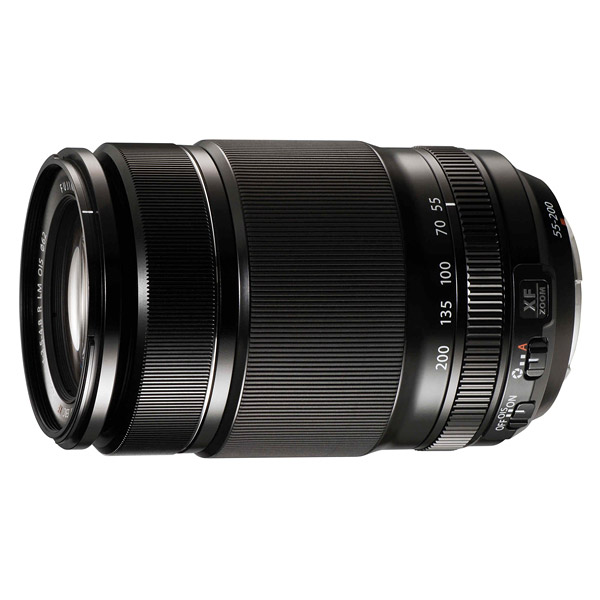 | Fujifilm XF 55-200mm f/3.5-4.8 R LM OIS Pros: Fuji Quality, stabilizer, build quality Cons: A bit dark, missing zoom lock key Opinion: Bought recently but very satisfied. Light, responsive and fast. Great focal hike. The stabilizer is extraordinary and overall the quality of the materials and the constructive one is at the top. Fuji in this does not contradict itself. Excellent definition and sharpness, especially from 5.6 onwards. A little cumbersome with the hood. The only drawback is the lack of the barrel sliding block. Upside down tends to stretch easily. However also recommended for the price not exaggerated. sent on September 04, 2018 |
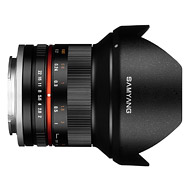 | Samyang 12mm f/2.0 NCS CS Pros: Construction, smoothness, sharpness, color Cons: Correctable Distortion, mf not immediate, chromatic aberration sometimes annoying Opinion: Excellent lens, well assembled and sturdy. It gives back the feeling of a return to photography, that thought. The sliding of the ring nuts is pleasant and soft. Undoubtedly a beautiful object. At the beginning I had some problems of MF but very calmly and patiently I was able to find the right feeling. Obviously it is not a "frame and shoot" lens but it requires attention and reflection on what you are doing. And that's what I prefer. Sharp but not a blade. The distortion is present but it is also normal for a focal of this type. The rather sore note is the chromatic aberration (blue, violet) that is solvable in PP but to a certain point. Sometimes it seemed more accentuated, sometimes (often) bearable. It is however one of the goals that I always carry with me and mounted on the Fuji X-T20 makes its figure. Very recommended even considering the price. sent on August 20, 2018 |
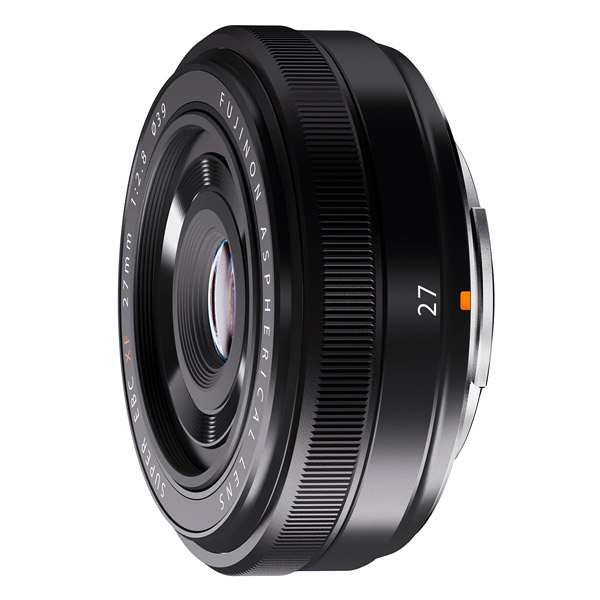 | Fujifilm XF 27mm f/2.8 Pros: very small size, image quality, practicality of use Cons: noisy, build quality not on top, bad cap Opinion: Bought from a few days but already quite satisfied with the quality of the images it returns. Sharpness, depth and detail that you do not expect at first impact from a lens that honestly looks a bit like a toy. The blurry is good but not excellent. Unfortunately I found an AF movement a little too noisy that you hardly get used to (I don't know if others have verified the same thing). The lack of the diaphragms' ring, on the other hand, replaced by the management by the rear washer to me sincerely does not mind at all, indeed I find it even faster and more practical. I don't think I'll ever make a habit of using the cap really of bad quality and so easy to release that every time I have to make sure two, three, four times that it's anchored well to the pre-arranged seat. A real stress. And then, sorry if I dwell too much on such a detail but it really looks like the plastic cap of a sink! The quality of Fuji optics surprises me more and more, but the accessories... let's spread a veil for now... We hope Fuji will give us a little thought to review the lampshade, the caps and other small or large plastic components. For the rest, very recommended lens especially for practicality and its portability. At the 27, my X-T20 is practically the size of a compact. And it doesn't seem like much to me. sent on May 18, 2018 |
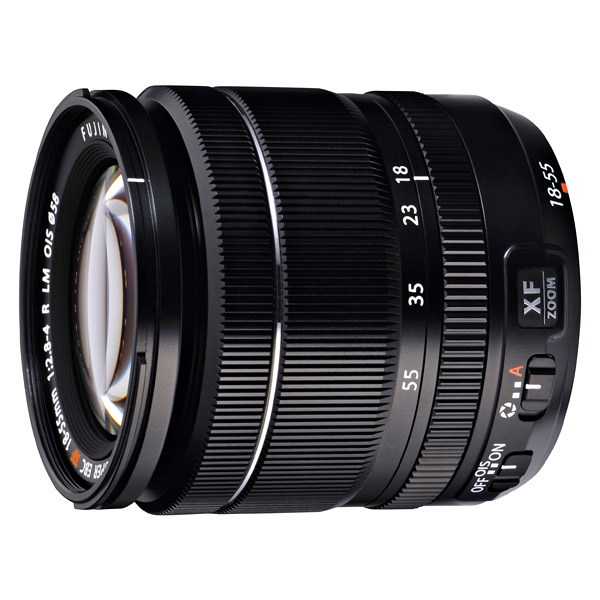 | Fujifilm XF 18-55 f/2.8-4R LM OIS Pros: Sturdy, well-built, bright, stabilization, sharp to the edge Cons: honestly nothing particular Opinion: I join the chorus. Excellent kit lens. Must consider given the price. Worth every penny of what it costs. Immediately gives a feeling of strength and professionalism being a consistent and all-metal. Good also the slip and stretch. Excellent on VR and overall sharpness and quality of detail is guaranteed a little around the frame and even at the edges (especially by 27 ... 35 mm onwards), something not obvious even to many targets considered PRO. To keep with you at all. For me, rating: 9 sent on May 01, 2018 |
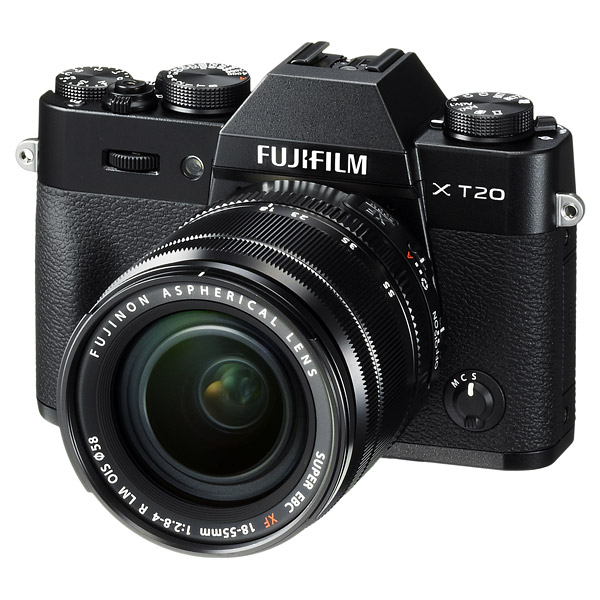 | Fujifilm X-T20 Pros: Saturated, crisp, ready-to-use JPEG files, definition, completeness of menus, Fuji Film simulation, vintage aesthetic very appealing Cons: Ergonomics, grip, some menu functions difficult to find, not tropicalized, automatic white balance not always reliable Opinion: Purchased in combination with the excellent 18-55 f 2.8-4 I liked from the first shots. Aesthetically I find it really beautiful, vintage flavor that obviously reminds the mechanical film cameras that we all loved. But I must also emphasize how many the difficulty in challenging and managing the commands (many but too close to each other). Beautiful, beautiful, but too small! At first glance it looks like a toy, then you get a little hand... The hand grip (bought soon after) is not only helpful but it is essential! And I don't have big hands. Many plastic parts, especially at the top. To those who claim that it is all metal or magnesium alloy I highly recommend that you hold some more professional body to understand the difference. Comfortable the touchscreen and the tilt monitor (perhaps my somewhat layer to tilt) and rich in ring nuts and customizable buttons. The menu provides a good dose of practice and sometimes patience. For example find and overlay to the display grid framing for me that I use often for photos of architecture and more is a real headache! Assumes a separate study! But the points in favor are many: good files and dense, jpeg ready and RAW very workable. Very comfortable to take on the road and with a remarkable chromatic rendition. I have noticed on several occasions, however, a balance of automatic white not very correct. Possibility to visualize in real time all the parameters and the resulting image through the electronic viewfinder. The 18-55 taken in kit (that one, metal) carries out its work very well and is sharp and saturated all over the frame to the edges. One of the best kit lenses you could want. And then excellent AF at 325 points (!) with the possibility of selecting the subject very precise. 4k Video, filters ADV1 and ADV2 customizable, live view very good, high ISO hold not to scream but still good, panoramic photos, filters Fuji Film simulation, in short... VERY RECOMMENDED! sent on May 01, 2018 |
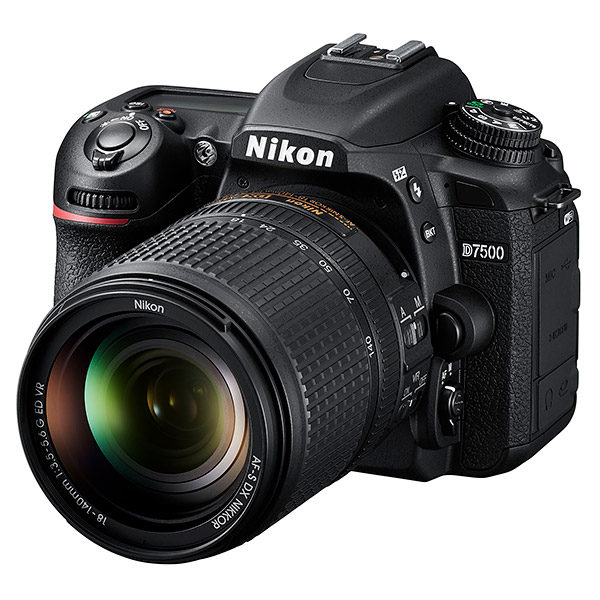 | Nikon D7500 Pros: Excellent sensor, image quality, handling, grip, lightweight, shutter speed, ISO sealing, 4k video Cons: Unique SD slot, functions and controls on the camera body from entry level (effect, scene, no flash, etc.). Opinion: Excellent machine for any situation, very high performance and especially fast. Saturated and very definite files. I can not make the comparison with the D7200 that preceded it, but also possessing a FF D610 I can say that the new does not disfigure for nothing, indeed! I was also very impressed by the accuracy of the AF at 51 points, hooks which is a marvel! Very comfortable the tilting display, even if only vertically, and the best grip, deeper, that allows a better and safer grip. I find it exaggerated if not useless the possibility of bringing the ISO to 1.6 million (a real madness) also because the photos are unusable. There has been, I think, by the Japanese House the attempt to launch on the market a product that in some way diversified from the previous D7200 for Sprint and performance brought "to the limits" even considering the gust to 8fps (notable for a machine of This price range) and that it was even closer to the flagship APS-C. Obviously the D500 is another thing.... The unique slot is definitely a step backwards (sin) and is a choice, in my opinion, towards greater compactness and simplicity but that brings too much to the entry level. Still recommended. sent on January 28, 2018 |
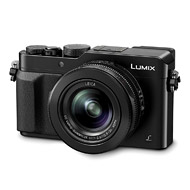 | Panasonic Lumix LX100 Pros: lightness, maneuverability, 4: 3 sensor, viewfinder, shutter speed, image quality, very bright leica optics Cons: compact camera, use of not easy immediacy, rather visible noise at high ISO, Opinion: I use this compact for a short time but I can say that I absolutely regretted having bought it after selecting it from dozens and dozens of similar rooms. It is proving to be an excellent travel companion, light, practical, versatile and above all well built. Comfortable and compact, certainly not "invisible", but the quality is seen and felt also by the construction material and weight. The 4: 3 sensor is very good, as is the very bright Leica 24-75 optic (f 1: 7-2: 8). Of course not comparable to the FF SLR (I distance myself from all those who say otherwise!) And not even to many SLR cameras with a larger sensor, but fulfills his work. Very convenient controls provided but that require a bit of practice to exploit them to the fullest. I expected a little more "containment" of noise above ISO 800-1000 but everything can not be in a compact of this range. Very recommended as long as you accept the limits, first of all those of a Prosumer handyman, certainly higher than most of the sand colleagues. sent on January 05, 2018 |
 JuzaPhoto contains affiliate links from Amazon and Ebay and JuzaPhoto earn a commission in case of purchase through affiliate links.
JuzaPhoto contains affiliate links from Amazon and Ebay and JuzaPhoto earn a commission in case of purchase through affiliate links.May Beauty Be Everywhere Around Me